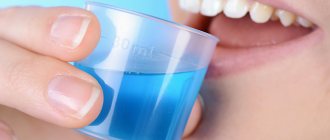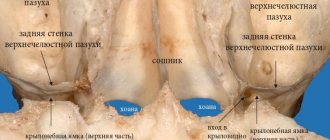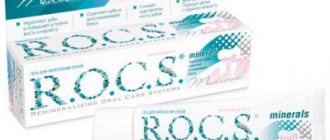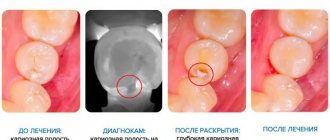The problem of caries is especially acute in childhood, since the child’s tooth enamel is not yet strong, and children do not always want to adhere to the rules of hygiene, and even if they try to brush their teeth regularly, they rarely succeed in doing everything correctly. As a result, microbes find an environment suitable for reproduction. As a result, the child constantly suffers from toothache and parents are forced to frequently visit dentists.
Children perceive going to the dentist differently, but in any case it would be better to reduce these visits to a minimum. Fissure sealing in children is perfect for this, especially since the procedure can be completed at an affordable price.
In what cases is fissure sealing prescribed and why?
To prevent premature tooth decay in the fissure area, dentists recommend sealing. This method allows you to reliably close vulnerable areas, thereby ensuring their protection from the effects of bacteria. Thus, the enamel in the grooves has time to mature and strengthen, after which it becomes less susceptible to caries.
It is important to remember that the first fissure lesions can occur immediately after the eruption of permanent teeth. If their enamel is not strong enough, caries may appear during the first year of tooth growth. Therefore, it is better not to delay sealing.
Fissure sealing in children: pros and cons
The clear and most significant advantage of this procedure is the reliable protection of chewing teeth from caries. However, it is important to understand that the sealant only protects the tooth on the chewing surface, and the contact and lateral surfaces remain vulnerable to plaque. Therefore, it is imperative to maintain good oral hygiene, use not only a toothbrush and toothpaste, but also dental floss.
Important! Pediatric dentists recommend that parents monitor the quality of teeth cleaning in children under 8–10 years of age. Until the child masters manual skills at a sufficient level, for example, until he learns to tie his own shoelaces or write in cursive.
Dental fissure sealing – what is it?
Fissure sealing is a very simple and painless procedure. It consists of applying a certain substance to the side tooth, which reliably covers the grooves and protects them from the harmful effects of bacteria.
It often takes no more than 5 minutes to seal one tooth. In this case, the patient does not feel any discomfort. The effect of the procedure lasts for five or more years. As practice shows, patients who have undergone sealing are much less likely to have problems with the appearance of caries on fissures, even after 10-20 or more years.
The essence of the sealing procedure
In dentistry, fissures mean grooves and tubercles located on the surface of the tooth. They come in several types: in the form of funnels, cones, drops, and even polyp-shaped.
While it is easy to remove food debris and plaque from the enamel surface, cleaning fissures is much more difficult. As a result, bacteria accumulate there and an infection begins to develop, destroying the enamel and gradually penetrating deep into the tooth.
Fissure sealing involves filling the fissures with a special sealing compound, which facilitates oral hygiene and prevents the development of infections.
Modern methods of carrying out the procedure
The technique for sealing fissures is quite simple. If all the necessary materials are available, any dentist can perform it. However, depending on the condition of the teeth, the procedure algorithm may be different.
Invasive sealing
In cases where the fissures of the tooth are very narrow or deep, or caries has already begun to develop in them or nearby, the doctor carries out invasive sealing. It begins with sanding, which allows access to the entire surface of the fissures for thorough cleaning and coating with sealant. Also, shallow carious lesions (up to 2 mm) are removed from the fissure.
If the fissure lesions are more serious and the caries has spread to large areas, the doctor carries out standard treatment before sealing. Only after this can he begin to seal the fissures. This is done to prevent the possibility of tooth decay developing under the hardened material.
Non-invasive technique
A non-invasive procedure is carried out when the tooth is completely healthy and its fissures do not even have superficial lesions. In this case, they are simply cleaned well, disinfected and a sealant is applied.
Advantages and disadvantages of sealing
This procedure allows you to maintain healthy teeth without the use of a drill. Additional advantages include:
- Provides additional protection to the tooth surface.
- Helps strengthen enamel, which is important if you have poor heredity.
- Stops caries at the chalk spot stage.
- The sealant perfectly fixes existing fillings, which increases their service life.
- Prevents the appearance of secondary caries.
Some doctors believe that coating teeth with liquid sealant interferes with their natural growth and formation. Therefore, in early childhood (up to 3 years), it is better to use other methods of preventive filling.
The disadvantages also include complications that may arise when sealing fissures with existing carious enamel lesions. In some cases, uneven distribution of the composition can negatively affect the bite. But this is completely excluded if the procedure is performed by an experienced dentist.
If fissure sealing is recommended for you, you can find out the cost of the procedure in our center during an in-person appointment.
Features of using the technique for children and adults
Typically, fissure sealing is carried out in childhood, when permanent teeth are just beginning to grow. This can significantly reduce the likelihood of developing caries in the next 5-10 or even more years. The optimal time for the first procedure is the age of 6-7 years, when the first molars finish erupting. The next procedure can be performed as early as 8-9 years. It is during this period that the first permanent premolars erupt. The third stage is the age of 12-13 years, when the second permanent molars grow, which means the completion of the formation of the children's permanent dentition.
However, in certain cases, fissure sealing may also be recommended for adults. Despite the fact that the enamel in these areas of the tooth has already been formed, for a number of reasons it can become depleted, wear out, etc. If this happens, and the patient is worried about an increased likelihood of developing caries, he can resort to a fissure sealing procedure at any age.
Arguments for and against fissure sealing in childhood
The attitude towards sealing among doctors and patients is overwhelmingly positive. This procedure is carried out quickly and does not cause any discomfort, so even the youngest visitors to the dental office will not be afraid to perform it.
However, it is important to remember that the technology for carrying it out has a clearly established algorithm. And if an inexperienced doctor does not follow it, this is fraught with deterioration in the condition of the teeth - the beginning of the development of caries under the hardened sealant. Due to the fact that the surface of the fissures will become closed after the procedure, this process can easily be missed.
Deep fissures: indications and contraindications for sealing, description of the procedure
So, covering your teeth fissures with a special sealant will help keep them healthy. Moreover, a special gel is used for filling, to which fluoride is added, which further strengthens the teeth and prevents the development of caries. The importance of using such a composition is especially high for children's teeth. After molars erupt, their enamel has a thin structure with a weak mineral composition, vulnerable to external influences. While the enamel matures and accumulates the necessary minerals, sealing will help maintain its integrity.
The procedure can be required by any person, because everyone has fissures on their chewing teeth.
Indications:
- young age during the period of enamel maturation;
- pathologically thin tooth enamel;
- narrow grooves with a complex structure, making them difficult to clean;
- abnormally incorrect position of premolars and molars, malocclusion;
- the presence of primary signs of violation of the integrity of the enamel and its demineralization - superficial carious process, change in tooth color;
- the patient’s inability to maintain sufficient oral hygiene.
However, despite the usefulness of the procedure, it also has contraindications:
- the presence of caries - it must first be eliminated; it may require installing a filling, cleaning and prosthetic canals;
- wide fissures that are easy to clean with paste and a toothbrush;
- allergic reactions to the components of the sealant - in this case, dentistry offers a number of other preventive measures: fluoridation, remineralization, silvering of enamel.
A professional sealant includes diagnosis, tooth preparation, and sealant application. The procedure is painless and inexpensive. During the process, a liquid sealant or fissure sealant is used. The sealant has a fluid form that hardens under the influence of a light lamp. This allows him to penetrate even the most difficult to reach places. Sealing will help keep teeth healthy and strong for as long as possible and strengthen them.
Materials for fissure sealing
The sealing procedure is carried out using liquid flowable materials called sealants. They quickly spread over the surface of the teeth in the fissure area, filling all the smallest recesses. They contain fluorine, which provides additional strengthening and nutrition to the enamel during the sealing period. Sealants belong to the category of light-curing materials, due to which, after application, they are able to harden within 40 seconds under the influence of a special lamp.
The color of the fissure sealant can be completely different. Teens and adults can choose a clear material or one of the white ones that will best match the shade of the surface of the teeth. For small children, multi-colored options are provided - pink, blue, etc.
Materials used
To close the cavities, 2 types of special dental sealants are used:
- Sealant. The material is a low-viscosity composite resin that is resistant to moisture and enzymes found in saliva. The sealant is a light-curing material and has high fluidity. Thanks to its properties, the composition penetrates deep into the fissures and reliably seals them. The advantage of the material is its ability to strengthen tooth enamel due to its fluoride content.
- Glass ionizer. This is a dental cement that is used for filling teeth and fixing orthopedic products. It is widely used by specialists and is more popular than sealant due to its high adhesive properties, biological compatibility and low elasticity and elasticity. In addition, dental cement saturates tooth enamel with minerals due to the content of fluorine, calcium, aluminum and strontium ions. The disadvantage of this material is its low service life compared to resin.
Sealants may be colored or clear. The latter look more aesthetically pleasing and are used if there is a risk of developing caries after sealing. This is due to the fact that the transparency of the material allows you to notice the onset of pathology development in time and cure it. However, colored sealant is used more often, since it is easier for parents to track its integrity and replace it on time. Also, colored sealing materials are more convenient for dentists, as they simplify the application process and make it more precise.
Also, sealants may differ in consistency. For fissures with great depth, materials with a high degree of fluidity are used. If the recesses are small, then denser sealants are used.
The service life of the sealant is on average 5-7 years. While using the material, you should visit the dentist once every six months for preventive maintenance in order to prevent the development of dental diseases and monitor the integrity of the sealant.
Popular brands of dental sealants include:
- "Fissurite". A light-curing material that comes in regular white, clear and fluoride white. It is characterized by high fluidity, stable structure and high level of adhesion to tooth enamel.
- "Fissulight". It is a light-curing one-component composite that has low viscosity. The advantage of this sealant is resistance to wear and prevention of caries due to its fluoride content. The material is white and transparent. White has 6 shades.
- "UltraSeal XT". A modern version of sealant. It has increased fluidity and contains a component that releases fluorine. It is recommended for patients with reduced resistance of dental tissues to caries, in the presence of a large number of carious lesions, low enamel mineralization, deep fissures and upcoming bite correction.
All sealants are supplied with a compact syringe for easy application of the material.
Fissure sealing technique
Sealing is carried out according to a certain algorithm:
- first, the doctor thoroughly cleans the tooth surface using fluoride-free paste;
- Next, the fissure is treated with an antiseptic and cotton rolls are installed;
- for better disinfection, the tooth is treated with a special acid, which is subsequently washed off;
- After thoroughly drying the fissure, sealant is applied;
- it is fixed using a lamp;
- the excess is sanded off;
- the surface is coated with a special varnish for greater fixation.
If all steps are carried out correctly, the tooth will remain hermetically sealed for 4-5 years. After this, if necessary, the procedure can be repeated.
Preventive actions
To ensure that caries does not bother you for many years, you must take the following preventive actions:
- Buy toothpastes containing calcium and fluoride. Parents can brush their children's teeth with toothpaste from the age of 2, and before that they should simply wipe their teeth with fingertips.
- From the age of 3 you can already use children's electric toothbrushes.
- You need to brush your teeth 2 times a day: in the morning after meals and in the evening before bed.
- When using a manual toothbrush, you need to brush your teeth correctly: the movements should only be “sweeping” - from the gum to the tooth, the toothbrush is positioned at an angle of 45 degrees.
Indications and restrictions for the procedure
The main indication for the procedure is the completion of the eruption of permanent teeth. Since fissure sealing is one of the most effective methods of caries prevention, you should not delay it. If this time has been missed, but the process of damage has not yet begun on the teeth, fissure sealing can be done at any other age.
In addition, it is important to pay attention to the condition of the surface of molars and premolars. If pigment spots or small depressions begin to appear in the area of their fissures, this is a direct indication for the procedure.
As for restrictions, there are not many of them. The main one is severe damage to teeth by caries. Also, the procedure may be refused if the patient has allergic reactions to certain materials used.
Features of sealing
The question of how fissure sealing is carried out also implies two answers, since there are invasive and non-invasive methods.
In the first case, fissure expansion is carried out. This method is used if dental cavities are difficult to access or have complex shapes. In the second case, no additional intervention is required.
! IMPORTANT ! Before sealing fissures, the dentist must make sure that there is no caries at the bottom of the cavity. Otherwise, an infection will develop under the sealant, which can lead to serious consequences, including tooth loss.
During the procedure, two types of sealants are used:
- transparent;
- opaque.
In the first case, the sealant makes it possible to notice the presence of caries in the cavity and promptly carry out treatment, but its transparency does not make it possible to assess the condition of the sealant. In the case of opaque compositions, the situation is inversely proportional.
Cost of fissure sealing
Since the procedure is non-invasive or minimally invasive and takes no more than a few minutes, the cost will also be low. Typically, you need to pay 2-3 times less for sealing one fissure than for treatment in the presence of caries.
However, the cost of the procedure may vary depending on the characteristics of the materials used, as well as the condition of the dentition. Therefore, the price must be clarified in each specific case.
The iOrtho clinic network provides high-quality services for correcting malocclusion with Invisalign aligners, sign up for a consultation now!









